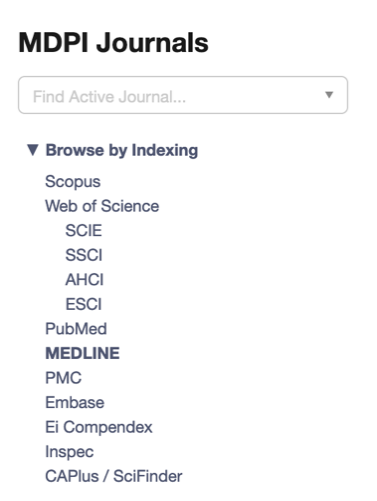
Journal Menu
► ▼ Journal Menu-
- Horticulturae Home
- Aims & Scope
- Editorial Board
- Reviewer Board
- Topical Advisory Panel
- Instructions for Authors
- Special Issues
- Topics
- Sections & Collections
- Article Processing Charge
- Indexing & Archiving
- Editor’s Choice Articles
- Most Cited & Viewed
- Journal Statistics
- Journal History
- Journal Awards
- Society Collaborations
- Conferences
- Editorial Office
- 10th Anniversary
Journal Browser
► ▼ Journal BrowserNeed Help?
Announcements
19 August 2024
Horticulturae | Invitation to Read the 2022–2023 Highly Cited Papers in the Section “Protected Culture”
It is our honor to present highly cited papers published by Horticulturae (ISSN: 2311-7524) in 2022 and 2023 in the Section “Protected Culture”. We would like to take this opportunity to acknowledge the outstanding individuals and teams whose work inspires fellow researchers and profoundly influences the field of horticulture science. We invite you to read the outstanding works listed below.
1. “What You May Not Realize about Vertical Farming”
by Farzana A. Lubna, David C. Lewus, Timothy J. Shelford and Arend-Jan Both
Horticulturae 2022, 8(4), 322; https://doi.org/10.3390/horticulturae8040322
Available online: https://www.mdpi.com/2311-7524/8/4/322
2. “Disinfection Efficacy of Tobamovirus-Contaminated Soil in Greenhouse-Grown Crops”
by Aviv Dombrovsky, Netta Mor, Shelly Gantz, Oded Lachman and Elisheva Smith
Horticulturae 2022, 8(7), 563; https://doi.org/10.3390/horticulturae8070563
Available online: https://www.mdpi.com/2311-7524/8/7/563
3. “The Inclusion of Green Light in a Red and Blue Light Background Impact the Growth and Functional Quality of Vegetable and Flower Microgreen Species”
by Matteo Orlando, Alice Trivellini, Luca Incrocci, Antonio Ferrante and Anna Mensuali
Horticulturae 2022, 8(3), 217; https://doi.org/10.3390/horticulturae8030217
Available online: https://www.mdpi.com/2311-7524/8/3/217
4. “Bio-Fertilizers Reduced the Need for Mineral Fertilizers in Soilless-Grown Capia Pepper”
by Hayriye Yildiz Dasgan, Mehmet Yilmaz, Sultan Dere, Boran Ikiz and Nazim S. Gruda
Horticulturae 2023, 9(2), 188; https://doi.org/10.3390/horticulturae9020188
Available online: https://www.mdpi.com/2311-7524/9/2/188
5. “Can Light Spectrum Composition Increase Growth and Nutritional Quality of Linum usitatissimum L. Sprouts and Microgreens?”
by Martina Puccinelli, Rita Maggini, Luciana G. Angelini, Marco Santin, Marco Landi, Silvia Tavarini, Antonella Castagna and Luca Incrocci
Horticulturae 2022, 8(2), 98; https://doi.org/10.3390/horticulturae8020098
Available online: https://www.mdpi.com/2311-7524/8/2/98
6. “Cleaning of Tomato brown rugose fruit virus (ToBRFV) from Contaminated Clothing of Greenhouse Employees”
by Jens Ehlers, Shaheen Nourinejhad Zarghani, Bärbel Kroschewski, Carmen Büttner and Martina Bandte
Horticulturae 2022, 8(8), 751; https://doi.org/10.3390/horticulturae8080751
Available online: https://www.mdpi.com/2311-7524/8/8/751
7. “Agrivoltaic System and Modelling Simulation: A Case Study of Soybean (Glycine max L.) in Italy“
by Eleonora Potenza, Michele Croci, Michele Colauzzi and Stefano Amaducci
Horticulturae 2022, 8(12), 1160; https://doi.org/10.3390/horticulturae8121160
Available online: https://www.mdpi.com/2311-7524/8/12/1160
8. “Soilless Tomato Production: Effects of Hemp Fiber and Rock Wool Growing Media on Yield, Secondary Metabolites, Substrate Characteristics and Greenhouse Gas Emissions”
by Annika Nerlich, Stefan Karlowsky, Dietmar Schwarz, Nadja Förster and Dennis Dannehl
Horticulturae 2022, 8(3), 272; https://doi.org/10.3390/horticulturae8030272
Available online: https://www.mdpi.com/2311-7524/8/3/272
9. “Characterizing the Spatial Uniformity of Light Intensity and Spectrum for Indoor Crop Production”
by László Balázs, Zoltán Dombi, László Csambalik and László Sipos
Horticulturae 2022, 8(7), 644; https://doi.org/10.3390/horticulturae8070644
Available online: https://www.mdpi.com/2311-7524/8/7/644
10. “Complementary Nutrients in Decoupled Aquaponics Enhance Basil Performance”
by Dylan Rodgers, Eugene Won, Michael B. Timmons and Neil Mattson
Horticulturae 2022, 8(2), 111; https://doi.org/10.3390/horticulturae8020111
Available online: https://www.mdpi.com/2311-7524/8/2/111
11. “Optimization of the Yield, Total Phenolic Content, and Antioxidant Capacity of Basil by Controlling the Electrical Conductivity of the Nutrient Solution”
by Xiaowei Ren, Na Lu, Wenshuo Xu, Yunfei Zhuang and Michiko Takagaki
Horticulturae 2022, 8(3), 216; https://doi.org/10.3390/horticulturae8030216
Available online: https://www.mdpi.com/2311-7524/8/3/216
12. “Vertical Greenery as Natural Tool for Improving Energy Efficiency of Buildings”
by Carlo Alberto Campiotti, Lorenzo Gatti, Alessandro Campiotti, Luciano Consorti, Patrizia De Rossi, Carlo Bibbiani, Rosario Muleo and Arianna Latini
Horticulturae 2022, 8(6), 526; https://doi.org/10.3390/horticulturae8060526
Available online: https://www.mdpi.com/2311-7524/8/6/526
13. “Effects of Shading Nets on Reactive Oxygen Species Accumulation, Photosynthetic Changes, and Associated Physiochemical Attributes in Promoting Cold-Induced Damage in Camellia sinensis (L.) Kuntze”
by Shah Zaman, Jiazhi Shen, Shuangshuang Wang, Yu Wang, Zhaotang Ding, Dapeng Song, Hui Wang, Shibo Ding, Xu Pang and Mengqi Wang
Horticulturae 2022, 8(7), 637; https://doi.org/10.3390/horticulturae8070637
Available online: https://www.mdpi.com/2311-7524/8/7/637
19 August 2024
MDPI’s 2023 Young Investigator Awards—Winners Announced

MDPI’s Young Investigator Awards recognize promising early career scientists, acknowledge their contributions, and foster collaboration within the scientific community. We are proud to announce the recipients for 2023, who were carefully selected by the journals’ esteemed Award Evaluation Committee.
We extend our heartfelt congratulations to the 79 winners of MDPI’s 2023 Young Investigator Awards for their excellent contributions in their research field. We look forward to seeing these rising stars continue to contribute to the advancement of science.
MDPI will continue to support and recognize the academic community. To explore details about the awardees by field, please visit the individual pages listed below:
Congratulations to all the winners for their exceptional contributions and dedication to advancing scientific research.
About MDPI Awards:
To support the academic community, particularly young researchers, and to enhance communication among scientists, MDPI journals regularly offer various awards to researchers in specific fields. These awards, serving as a source of inspiration and recognition, help to elevate the profiles of talented individuals who have made outstanding achievements and are making significant contributions to advancements in their respective fields.
To find out more about MDPI awards, please click here.
16 August 2024
Horticulturae | Invitation to Read the 2022–2023 Highly Cited Papers in the Section “Fruit Production Systems”
It is our honor to present highly cited papers published by Horticulturae (ISSN: 2311-7524) from 2022 and 2023 in the Section “Fruit Production Systems”. We would like to take this opportunity to acknowledge the outstanding individuals and teams whose work inspires fellow researchers and profoundly influences the field of horticulture science. We invite you to read the outstanding works listed below.
1. “Lightweight Apple Detection in Complex Orchards Using YOLOV5-PRE”
by Lijuan Sun, Guangrui Hu, Chao Chen, Haoxuan Cai, Chuanlin Li, Shixia Zhang and Jun Chen
Horticulturae 2022, 8(12), 1169; https://doi.org/10.3390/horticulturae8121169
Available online: https://www.mdpi.com/2311-7524/8/12/1169
2. “Automatic Pest Monitoring Systems in Apple Production under Changing Climatic Conditions”
by Dana Čirjak, Ivana Miklečić, Darija Lemić, Tomislav Kos and Ivana Pajač Živković
Horticulturae 2022, 8(6), 520; https://doi.org/10.3390/horticulturae8060520
Available online: https://www.mdpi.com/2311-7524/8/6/520
3. “Estimation of Vegetative Growth in Strawberry Plants Using Mobile LiDAR Laser Scanner”
by Kowshik Kumar Saha, Nikos Tsoulias, Cornelia Weltzien and Manuela Zude-Sasse
Horticulturae 2022, 8(2), 90; https://doi.org/10.3390/horticulturae8020090
Available online: https://www.mdpi.com/2311-7524/8/2/90
4. “A Fruit Colour Development Index (CDI) to Support Harvest Time Decisions in Peach and Nectarine Orchards”
by Alessio Scalisi, Mark G. O’Connell, Muhammad S. Islam and Ian Goodwin
Horticulturae 2022, 8(5), 459; https://doi.org/10.3390/horticulturae8050459
Available online: https://www.mdpi.com/2311-7524/8/5/459
5. “In-Orchard Sizing of Mango Fruit: 1. Comparison of Machine Vision Based Methods for On-The-Go Estimation”
by Chiranjivi Neupane, Anand Koirala and Kerry B. Walsh
Horticulturae 2022, 8(12), 1223; https://doi.org/10.3390/horticulturae8121223
Available online: https://www.mdpi.com/2311-7524/8/12/1223
6. “Monitoring Stem Water Potential with an Embedded Microtensiometer to Inform Irrigation Scheduling in Fruit Crops”
by Alan N. Lakso, Michael Santiago and Abraham D. Stroock
Horticulturae 2022, 8(12), 1207; https://doi.org/10.3390/horticulturae8121207
Available online: https://www.mdpi.com/2311-7524/8/12/1207
7. “Crop Diversification Effects on Soil Aggregation and Aggregate-Associated Carbon and Nitrogen in Short-Term Rainfed Olive Groves under Semiarid Mediterranean Conditions”
by Manuel González-Rosado, Luis Parras-Alcántara, Jesús Aguilera-Huertas and Beatriz Lozano-García
Horticulturae 2022, 8(7), 618; https://doi.org/10.3390/horticulturae8070618
Available online: https://www.mdpi.com/2311-7524/8/7/618
8. “’60 Years on’—Effects of Climatic Change on Tree Phenology—A Case Study Using Pome Fruit”
by Achim Kunz and Michael Blanke
Horticulturae 2022, 8(2), 110; https://doi.org/10.3390/horticulturae8020110
Available online: https://www.mdpi.com/2311-7524/8/2/110
9. “Table-Grape Cultivation in Soil-Less Systems: A Review”
by Antonino Pisciotta, Ettore Barone and Rosario Di Lorenzo
Horticulturae 2022, 8(6), 553; https://doi.org/10.3390/horticulturae8060553
Available online: https://www.mdpi.com/2311-7524/8/6/553
10. “Fruiting, Morphology, and Architecture of ‘Arbequina’ and ‘Calatina’ Olive Branches”
by Alessandro Carella, Roberto Massenti, Giuseppe Milazzo, Tiziano Caruso and Riccardo Lo Bianco
Horticulturae 2022, 8(2), 109; https://doi.org/10.3390/horticulturae8020109
Available online: https://www.mdpi.com/2311-7524/8/2/109
11. “Unlocking Plum Genetic Potential: Where Are We At?”
by Francesco Sottile, Chiara Caltagirone, Giovanna Giacalone, Cristiana Peano and Ettore Barone
Horticulturae 2022, 8(2), 128; https://doi.org/10.3390/horticulturae8020128
Available online: https://www.mdpi.com/2311-7524/8/2/128
12. “Rootstocks for Commercial Peach Production in the Southeastern United States: Current Research, Challenges, and Opportunities”
by Ricardo A. Lesmes-Vesga, Liliana M. Cano, Mark A. Ritenour, Ali Sarkhosh, José X. Chaparro and Lorenzo Rossi
Horticulturae 2022, 8(7), 602; https://doi.org/10.3390/horticulturae8070602
Available online: https://www.mdpi.com/2311-7524/8/7/602
13. “Sustainable Olive Culture under Climate Change: The Potential of Biostimulants”
by Maria Celeste Dias, Márcia Araújo, Sónia Silva and Conceição Santos
Horticulturae 2022, 8(11), 1048; https://doi.org/10.3390/horticulturae8111048
Available online: https://www.mdpi.com/2311-7524/8/11/1048
14. “The Link between Mineral Elements Variation and Internal Flesh Breakdown of ‘Keitt’ Mango in a Steep Slope Mountain Area, Southwest China”
by Xiaowei Ma, Jianfang Wang, Muqing Su, Bin Liu, Bang Du, Yuehua Zhang, Liping He, Songbiao Wang and Hongxia Wu
Horticulturae 2022, 8(6), 533; https://doi.org/10.3390/horticulturae8060533
Available online: https://www.mdpi.com/2311-7524/8/6/533
15. “Potential of Different Actinidia Genotypes as Resistant Rootstocks for Preventing Kiwifruit Vine Decline Syndrome”
by Giovanni Mian, Guido Cipriani, Simone Saro, Marta Martini and Paolo Ermacora
Horticulturae 2022, 8(7), 627; https://doi.org/10.3390/horticulturae8070627
Available online: https://www.mdpi.com/2311-7524/8/7/627
16. “Estimating the Ripeness of Hass Avocado Fruit Using Deep Learning with Hyperspectral Imaging”
by Yazad Jamshed Davur, Wiebke Kämper, Kourosh Khoshelham, Stephen J. Trueman and Shahla Hosseini Bai
Horticulturae 2023, 9(5), 599; https://doi.org/10.3390/horticulturae9050599
Available online: https://www.mdpi.com/2311-7524/9/5/599
17. “Mapping of the Susceptibility of Colombian Musaceae Lands to a Deadly Disease: Fusarium oxysporum f. sp. cubense Tropical Race 4”
by Gustavo Rodríguez-Yzquierdo, Barlin O. Olivares, Oscar Silva-Escobar, Antonio González-Ulloa, Mauricio Soto-Suarez and Mónica Betancourt-Vásquez
Horticulturae 2023, 9(7), 757; https://doi.org/10.3390/horticulturae9070757
Available online: https://www.mdpi.com/2311-7524/9/7/757
18. “In-Orchard Sizing of Mango Fruit: 2. Forward Estimation of Size at Harvest”
by Marcelo H. Amaral and Kerry B. Walsh
Horticulturae 2023, 9(1), 54; https://doi.org/10.3390/horticulturae9010054
Available online: https://www.mdpi.com/2311-7524/9/1/54
19. “Increased Temperature Affects Tomato Fruit Physicochemical Traits at Harvest Depending on Fruit Developmental Stage and Genotype”
by Victoria A. Delgado-Vargas, Oscar J. Ayala-Garay, Ma. de Lourdes Arévalo-Galarza and Hélène Gautier
Horticulturae 2023, 9(2), 212; https://doi.org/10.3390/horticulturae9020212
Available online: https://www.mdpi.com/2311-7524/9/2/212
20. “Effect of Rain Cover on Tree Physiology and Fruit Condition and Quality of ‘Rainier’, ‘Bing’ and ‘Sweetheart’ Sweet Cherry Trees”
by Simón Pino, Miguel Palma, Álvaro Sepúlveda, Javier Sánchez-Contreras, Mariana Moya and José Antonio Yuri
Horticulturae 2023, 9(1), 109; https://doi.org/10.3390/horticulturae9010109
Available online: https://www.mdpi.com/2311-7524/9/1/109
21. “The Effect of Drip Irrigation on the Length and Distribution of Apple Tree Roots”
by Pavel Svoboda, Jan Haberle, Michal Moulik, Ivana Raimanová, Gabriela Kurešová and Martin Mészáros
Horticulturae 2023, 9(3), 405; https://doi.org/10.3390/horticulturae9030405
Available online: https://www.mdpi.com/2311-7524/9/3/405
22. “Effects of Orchard Grass on Soil Fertility and Nutritional Status of Fruit Trees in Korla Fragrant Pear Orchard”
by Zengheng Wang, Rui Liu, Liang Fu, Shutian Tao and Jianping Bao
Horticulturae 2023, 9(8), 903; https://doi.org/10.3390/horticulturae9080903
Available online: https://www.mdpi.com/2311-7524/9/8/903
23. “Effect of Global Warming on the Yields of Strawberry in Queensland: A Mini-Review”
by Christopher Michael Menzel
Horticulturae 2023, 9(2), 142; https://doi.org/10.3390/horticulturae9020142
Available online: https://www.mdpi.com/2311-7524/9/2/142
24. “Fruit Quality of Satsuma Mandarins from Neretva Valley and Their Flavonoid and Carotenoid Content”
by Luna Maslov Bandić, Kristina Vlahoviček-Kahlina, Marija Sigurnjak Bureš, Katarina Sopko Stracenski, Nenad Jalšenjak, Goran Fruk, Ana Marija Antolković and Slaven Jurić
Horticulturae 2023, 9(3), 383; https://doi.org/10.3390/horticulturae9030383
Available online: https://www.mdpi.com/2311-7524/9/3/383
by Stephen Ross Williams, Arbind Agrahari Baniya, Muhammad Sirajul Islam and Kieran Murphy
Horticulturae 2023, 9(9), 1013; https://doi.org/10.3390/horticulturae9091013
Available online: https://www.mdpi.com/2311-7524/9/9/1013
16 August 2024
Horticulturae | Invitation to Read the 2022–2023 Highly Cited Papers in the Section “Postharvest Biology, Quality, Safety, and Technology”
It is our honor to present the most highly cited papers published by Horticulturae (ISSN: 2311-7524) in 2022 and 2023 in the Section “Postharvest Biology, Quality, Safety, and Technology”. We would like to acknowledge the outstanding individuals and teams whose work inspires our fellow researchers and influences the field of horticultural science. We invite you to read the outstanding works listed below.
1. “Postharvest Technologies of Fresh Citrus Fruit: Advances and Recent Developments for the Loss Reduction during Handling and Storage”
by Maria Concetta Strano, Giuseppe Altieri, Maria Allegra, Giovanni Carlo Di Renzo, Giuliana Paterna, Attilio Matera and Francesco Genovese
Horticulturae 2022, 8(7), 612; https://doi.org/10.3390/horticulturae8070612
Available online: https://www.mdpi.com/2311-7524/8/7/612
2. “Precooling and Cold Storage Methods for Fruits and Vegetables in Sub-Saharan Africa—A Review”
by Edna Makule, Noel Dimoso and Savvas A. Tassou
Horticulturae 2022, 8(9), 776; https://doi.org/10.3390/horticulturae8090776
Available online: https://www.mdpi.com/2311-7524/8/9/776
3. “Quality Characteristics of Oolong Tea Products in Different Regions and the Contribution of Thirteen Phytochemical Components to Its Taste”
by Zhihui Wang, Shuang Gan, Weijiang Sun and Zhidan Chen
Horticulturae 2022, 8(4), 278; https://doi.org/10.3390/horticulturae8040278
Available online: https://www.mdpi.com/2311-7524/8/4/278
4. “Evaluation of Proline-Coated Chitosan Nanoparticles on Decay Control and Quality Preservation of Strawberry Fruit (cv. Camarosa) during Cold Storage”
By Reza Bahmani, Farhang Razavi, Seyed Najmmaddin Mortazavi, Gholamreza Gohari and Antonio Juárez-Maldonado
Horticulturae 2022, 8(7), 648; https://doi.org/10.3390/horticulturae8070648
Available online: https://www.mdpi.com/2311-7524/8/7/648
5. “Emerging Technologies for Prolonging Fresh-Cut Fruits’ Quality and Safety during Storage”
by Rey David Iturralde-García, Francisco Javier Cinco-Moroyoqui, Oliviert Martínez-Cruz, Saúl Ruiz-Cruz, Francisco Javier Wong-Corral, Jesús Borboa-Flores, Yaeel Isbeth Cornejo-Ramírez, Ariadna Thalia Bernal-Mercado and Carmen Lizette Del-Toro-Sánchez
Horticulturae 2022, 8(8), 731; https://doi.org/10.3390/horticulturae8080731
Available online: https://www.mdpi.com/2311-7524/8/8/731
6. “Volatile Organic Compounds from Basil Essential Oils: Plant Taxonomy, Biological Activities, and Their Applications in Tropical Fruit Productions”
by Tibet Tangpao, Nutthawut Charoimek, Patipon Teerakitchotikan, Noppol Leksawasdi, Kittisak Jantanasakulwong, Pornchai Rachtanapun, Phisit Seesuriyachan, Yuthana Phimolsiripol, Thanongsak Chaiyaso, Warintorn Ruksiriwanich et al.
Horticulturae 2022, 8(2), 144; https://doi.org/10.3390/horticulturae8020144
Available online: https://www.mdpi.com/2311-7524/8/2/144
7. “On-Tree Fruit Bagging and Cold Storage Maintain the Postharvest Quality of Mango Fruit”
by Atif Nadeem, Zienab Fawzy Reiad Ahmed, Syed Bilal Hussain, Alaa El-Din K. Omar, Muhammad Amin, Saqib Javed, Amjad Ali, Sami Ullah, Kashif Razzaq, Ishtiaq A. Rajwana et al.
Horticulturae 2022, 8(9), 814; https://doi.org/10.3390/horticulturae8090814
Available online: https://www.mdpi.com/2311-7524/8/9/814
8. “Influence of Ripening Stage on Quality Parameters of Five Traditional Tomato Varieties Grown under Organic Conditions”
by María Concepción Ayuso-Yuste, Francisco González-Cebrino, Mercedes Lozano-Ruiz, Ana María Fernández-León and María Josefa Bernalte-García
Horticulturae 2022, 8(4), 313; https://doi.org/10.3390/horticulturae8040313
Available online: https://www.mdpi.com/2311-7524/8/4/313
9. “Bark Extract of Uncaria tomentosa L. for the Control of Strawberry Phytopathogens”
by Eva Sánchez-Hernández, Pablo Martín-Ramos, Jesús Martín-Gil, Alberto Santiago-Aliste, Salvador Hernández-Navarro, Rui Oliveira, and Vicente González-García
Horticulturae 2022, 8(8), 672; https://doi.org/10.3390/horticulturae8080672
Available online: https://www.mdpi.com/2311-7524/8/8/672
10. “Allium Species in the Balkan Region—Major Metabolites, Antioxidant and Antimicrobial Properties”
by Sandra Vuković, Jelena B. Popović-Djordjević, Aleksandar Ž. Kostić, Nebojša Dj. Pantelić, Nikola Srećković, Muhammad Akram, Umme Laila and Jelena S. Katanić Stanković
Horticulturae 2023, 9(3), 408; https://doi.org/10.3390/horticulturae9030408
Available online: https://www.mdpi.com/2311-7524/9/3/408
11. “Comparison of Aroma Trait of the White-Fleshed Peach ‘Hu Jing Mi Lu’ and the Yellow-Fleshed Peach ‘Jin Yuan’ Based on Odor Activity Value and Odor Characteristics”
by Wenjing Liu, Yuanyuan Zhang, Ruijuan Ma and Mingliang Yu
Horticulturae 2022, 8(3), 245; https://doi.org/10.3390/horticulturae8030245
Available online: https://www.mdpi.com/2311-7524/8/3/245
12. “Pectin-Based Edible Coating Combined with Chemical Dips Containing Antimicrobials and Antibrowning Agents to Maintain Quality of Fresh-Cut Pears”
by Alina Mădălina Pleșoianu and Violeta Nour
Horticulturae 2022, 8(5), 449; https://doi.org/10.3390/horticulturae8050449
Available online: https://www.mdpi.com/2311-7524/8/5/449
13. “Polyphenolic Profile, Antioxidant and Antidiabetic Potential of Medlar (Mespilus germanica L.), Blackthorn (Prunus spinosa L.) and Common Hawthorn (Crataegus monogyna Jacq.) Fruit Extracts from Serbia”
by Jelena S. Katanić Stanković, Nenad Mićanović, Nadja Grozdanić, Aleksandar Ž. Kostić, Uroš Gašić, Tatjana Stanojković and Jelena B. Popović-Djordjević
Horticulturae 2022, 8(11), 1053; https://doi.org/10.3390/horticulturae8111053
Available online: https://www.mdpi.com/2311-7524/8/11/1053
14. “Chitosan Coating Improves Postharvest Shelf-Life of Mango (Mangifera indica L.)”
by Nehar Parvin, Afrina Rahman, Jayanta Roy, Md Harun Rashid, Newton Chandra Paul, Md. Asif Mahamud, Shahin Imran, Md. Arif Sakil, F M Jamil Uddin, Md. Elias Molla et al.
Horticulturae 2023, 9(1), 64; https://doi.org/10.3390/horticulturae9010064
Available online: https://www.mdpi.com/2311-7524/9/1/64
15. “The Role of 1-methylcyclopropylene (1-MCP) and Salicylic Acid (SA) in Induced Resistance of Postharvest Fruits”
by Xiangzhi Meng, Jiazhen Fang, Maorun Fu, Wenxiao Jiao, Pengfei Ren and Xiaoying Yang
Horticulturae 2023, 9(1), 108; https://doi.org/10.3390/horticulturae9010108
Available online: https://www.mdpi.com/2311-7524/9/1/108
16. “Physiology and Application of Gibberellins in Postharvest Horticultural Crops”
by Zhang, Jingyu, Yuhao Cao, Jia Tang, Xujie He, Ming Li, Chen Li, Xiaolin Ren and Yuduan Ding
Horticulturae 2023, 9(6), 625; https://doi.org/10.3390/horticulturae9060625
Available online: https://www.mdpi.com/2311-7524/9/6/625
17. “Reduction of Pericarp Browning and Microbial Spoilage on Litchi Fruits in Modified Atmosphere, Packaging”
by Roberta Passafiume, Pasquale Roppolo, Ilenia Tinebra, Antonino Pirrone, Raimondo Gaglio, Eristanna Palazzolo and Vittorio Farina
Horticulturae 2023, 9(6), 651; https://doi.org/10.3390/horticulturae9060651
Available online: https://www.mdpi.com/2311-7524/9/6/651
18. “Application of Cinnamaldehyde Solid Lipid Nanoparticles in Strawberry Preservation”
by Shangjian Li, Jiajia Chen, Yuntong Liu, Qinhua Zheng, Weijian Tan, Xiaolin Feng, Kexin Feng and Wenzhong Hu
Horticulturae 2023, 9(5), 607; https://doi.org/10.3390/horticulturae9050607
Available online: https://www.mdpi.com/2311-7524/9/5/607
19. “Study on the Application of Electronic Nose Technology in the Detection for the Artificial Ripening of Crab Apples”
by Jianlei Qiao, Guoqiang Su, Chang Liu, Yuanjun Zou, Zhiyong Chang, Hailing Yu, Lianjun Wang and Ruixue Guo
Horticulturae 2022, 8(5), 386; https://doi.org/10.3390/horticulturae8050386
Available online: https://www.mdpi.com/2311-7524/8/5/386
20. “Determination of Phenolic Compounds Using HPLC-UV Method in Wild Fruit Species”
by Ana-Maria Stoenescu, Ion Trandafir and Sina Cosmulescu
Horticulturae 2022, 8(2), 84; https://doi.org/10.3390/horticulturae8020084
Available online: https://www.mdpi.com/2311-7524/8/2/84
7 August 2024
MDPI Insights: The CEO's Letter #14 - New Headquarters, Marketing, Poland

Welcome to the MDPI Insights: The CEO's Letter.
In these monthly letters, I will showcase two key aspects of our work at MDPI: our commitment to empowering researchers and our determination to facilitating open scientific exchange.
Opening Thoughts
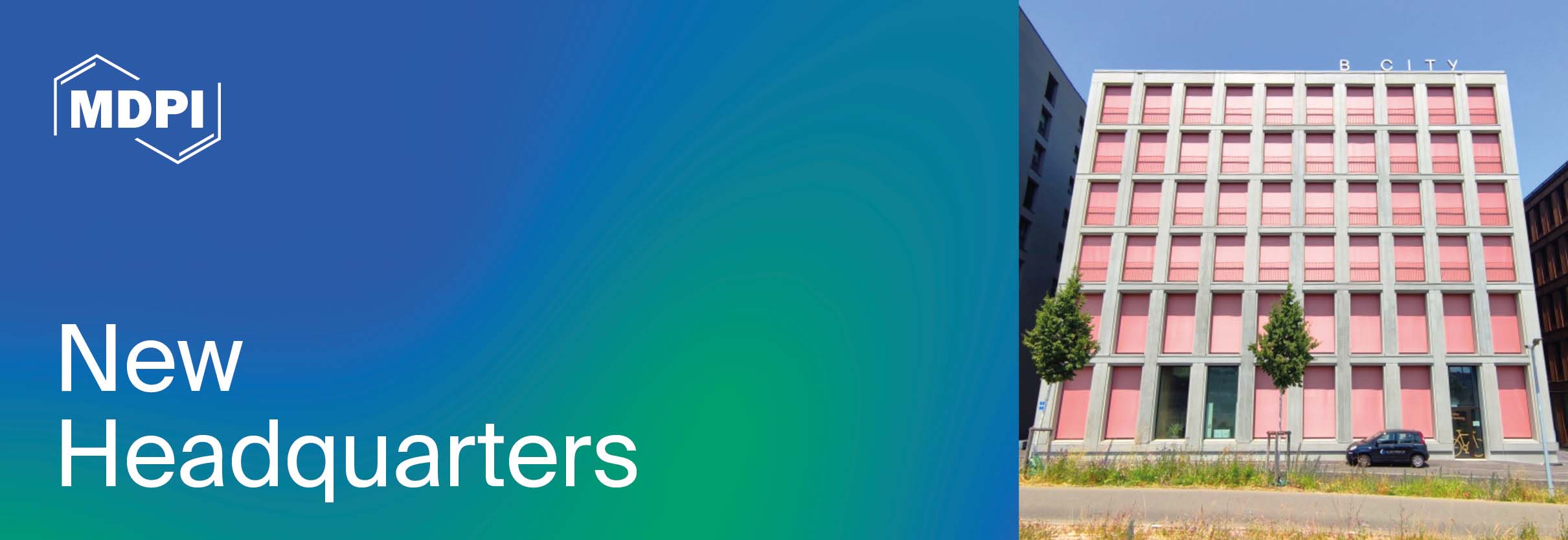
MDPI Moves to New Headquarters in Basel, Switzerland

I am excited to share that MDPI has moved to a new state-of-the-art office space in Basel, Switzerland. This move consolidates our operations by bringing together our two previously separated Basel offices into one central location.
We are always growing our talent pool and encourage you to view our Careers Page for the positions available in Basel and across our offices.
New Address: Grosspeteranlage 5, CH-4052 Basel, Switzerland
Effective Date: 1 July 2024
This new chapter in our company’s journey is designed to continue our mission of positioning MDPI as a leader in Open Access (OA) publishing, highlighting our commitment to making scholarly research accessible to everyone.

Boasting modern amenities, improved meeting and event spaces designed to support our growing needs, the new location provides a more collaborative and efficient working environment for our employees. The location offers convenient accessibility to public transportation and is situated near the Basel SBB railway station, with a variety of nearby services and amenities.
In fact, I can see the trains right outside of my window as I write these lines!
This move marks an exciting milestone in MDPI’s development, and I am confident that the new headquarters will serve as an inspiring and productive space for everyone. We also very much look forward to welcoming visitors here. You can read more about MDPI's history here.
“This new chapter continues our mission of positioning MDPI as a leader in OA publishing”
For Those New to MDPI
A pioneer in scholarly, Open Access publishing, MDPI has supported academic communities since 1996. MDPI is leading the transition to Open Science by making a greater proportion of the research conducted worldwide free and accessible to everyone. To date, over 3.5 million researchers have entrusted MDPI with publishing their scientific discoveries. MDPI’s editorial process is bolstered by a network of dedicated reviewers, a team of 6,000 professional, well-trained staff members, and an in-house article submission platform designed to ensure efficient processes within its 440 fully Open Access titles. MDPI supports more than 800 academic institutions worldwide, helping them adhere to national mandates while facilitating authors’ publication in fully compliant (CC BY) Open Access journals.
Impactful Research
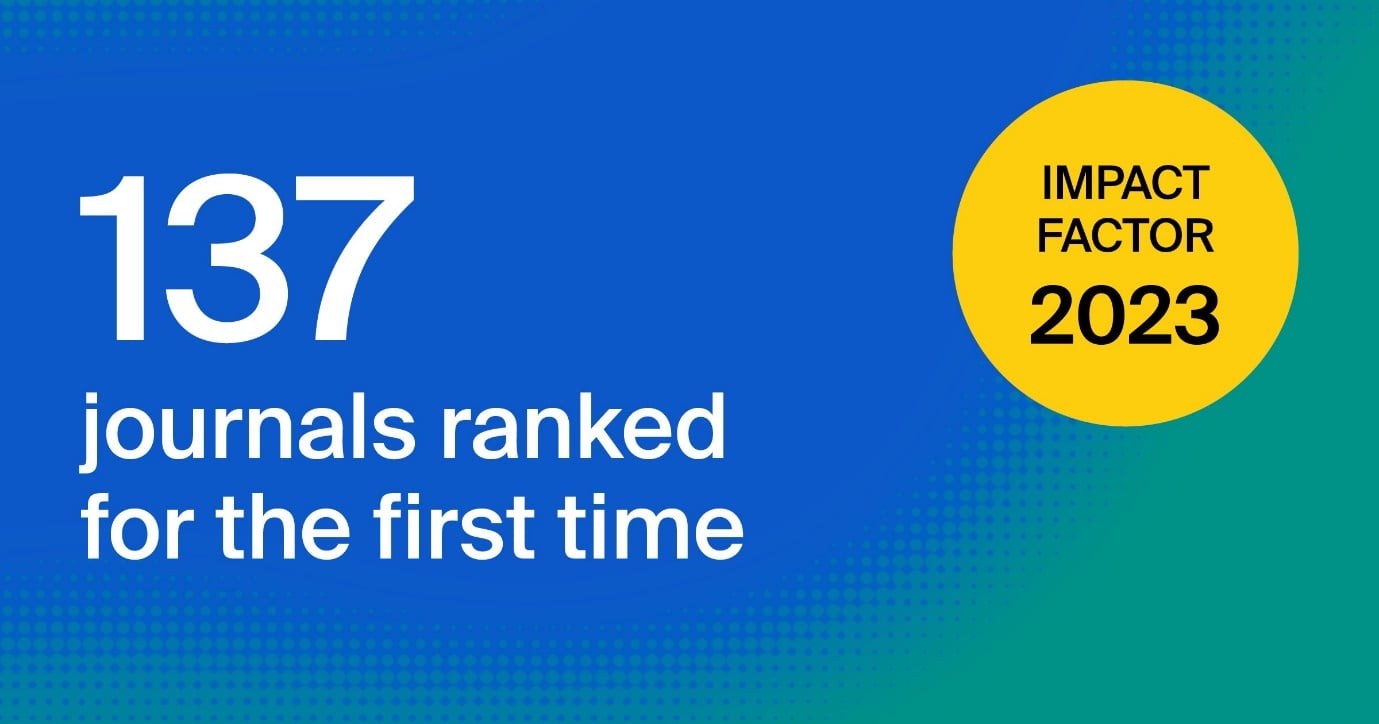
New and Emerging MDPI Journals Making an Immediate Impact
Unpacking some of the Impact Factor updates from the June CEO Letter, I wanted to dive a little deeper into the 137 MDPI journals which received Impact Factor for the first time.
Academic authors highly value efficient publishing processes, robust editorial support, and the opportunity to publish in high-impact journals. We are proud that our newly launched journals typically achieve coverage in the Emerging Sources Citation Index (ESCI) of the Web of Science within just a few years, with a median time of only three years from release to inclusion.
As part of our commitment to advancing academic research and providing high-quality OA publishing, we actively seek new research areas to expand our portfolio of journals. We have a proven track record of successfully establishing new journals.
Our dedicated teams excel in fostering dynamic editorial boards and working closely with Editors-in-Chief (EiC) to define the precise scope and focus of each new journal. Our expertise extends to collaborating with indexing services, ensuring that our journals comply with best practices and are indexed promptly in all relevant databases.
Emerging Titles Ranked for the First Time
Our commitment to excellence is reflected in the annual impact metrics released this past June. The latest edition of the Journal Citation Reports (JCR) showcases the integration of journals from the ESCI in the new unified category rankings, providing a simplified and more complete view of all journals within each subject category, including newly established titles.
Out of 137 new and developing MDPI journals ranked in the 2024 release, 79 are in the top half (Q1 or Q2) of their categories. Here is a breakdown of the number of MDPI’s ESCI-indexed journals by quartile in the JCR:
| Quartile | No. of journals |
| Q1 | 17 (12.4%) |
| Q2 | 62 (45.3%) |
| Q3 | 43 (31.4%) |
| Q4 | 15 (10.9%) |
| Not ranked (humanities-related journals) | 2 |
These rankings highlight our success in rapidly establishing high-impact new journals. Among those that made it directly into the top 25% of their category are the International Journal of Neonatal Screening, Journal of Xenobiotics, Polysaccharides, Smart Cities, and thirteen other journals.
You can browse MDPI journals by Indexing. Simply visit our Journals page and select from the list of Indexing bodies in the top left-hand corner.
Inside MDPI

MDPI Corporate Marketing Strategy and Team Meeting 2024
In July, I hosted the annual Corporate Marketing strategy and team-building activity with 15 of our team members.
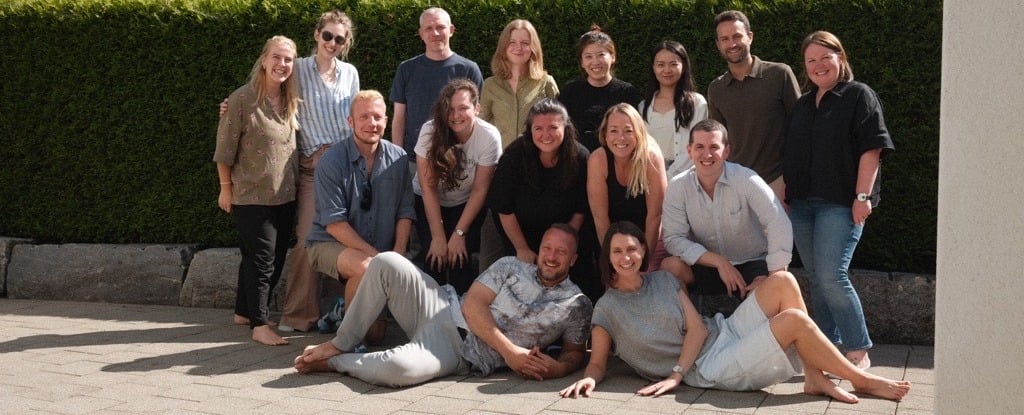
The aim was to align the Corporate Marketing strategy with MDPI's goal of becoming the world's most trusted OA publisher. While we provide a high-level publishing experience for our authors, as seen from our surveys, we need to keep building on our transparent and open communication to foster trust within the scholarly community and continue enhancing our reputation.
The Corporate Marketing team plays an important role as the mouthpiece for all our major activities within MDPI, especially those that model what it means to be a trusted partner. The purpose of the strategy meeting was to develop a feeling of trust in one another and an understanding of how to inspire trust in the stakeholders with whom we interact.
“We need to keep building on our transparent and open communication to foster trust within the scholarly community”

We conducted a set of activities to facilitate that sense of mutual trust and trustworthiness. Examples of some activities we worked on during this strategy-building event include:
- Exploring what trust means
- ‘Letter to self’
- ‘The brand I most trust’
- Most Trusted Academic Publisher
- ‘The brand I would like MDPI to become’
- ‘The 2029 MDPI Annual Report’
- Voice of Customer and Share of Voice – survey/data update on MDPI Brand Experience and Brand Perception
- Integrate Trust-Based Objective into Marketing Plan
- ‘Becoming the MDPI experience’
- ‘Trusting the next steps’
While two days is not enough to finalize a marketing strategy, it is sufficient to get everyone who attended into the mindset of the direction in which we are working. From here, we will develop a program with next steps on main projects, update communications, and collaborate with team leads to incorporate this approach into our work going forward.
As a marketing team, we can communicate our messages, but trust has to be built at every touchpoint in the stakeholder journey. Just talking about it isn’t enough. We need to be about it. That’s a role each of us plays, from editorial to IT, from marketing to HR. We must build trust from the inside out. It starts with each manager and resonates out via every team member.
As a company, our goal is to give all stakeholders with whom we interact – whether internal or external – the experience of working with an organization it can trust.
Coming Together for Science
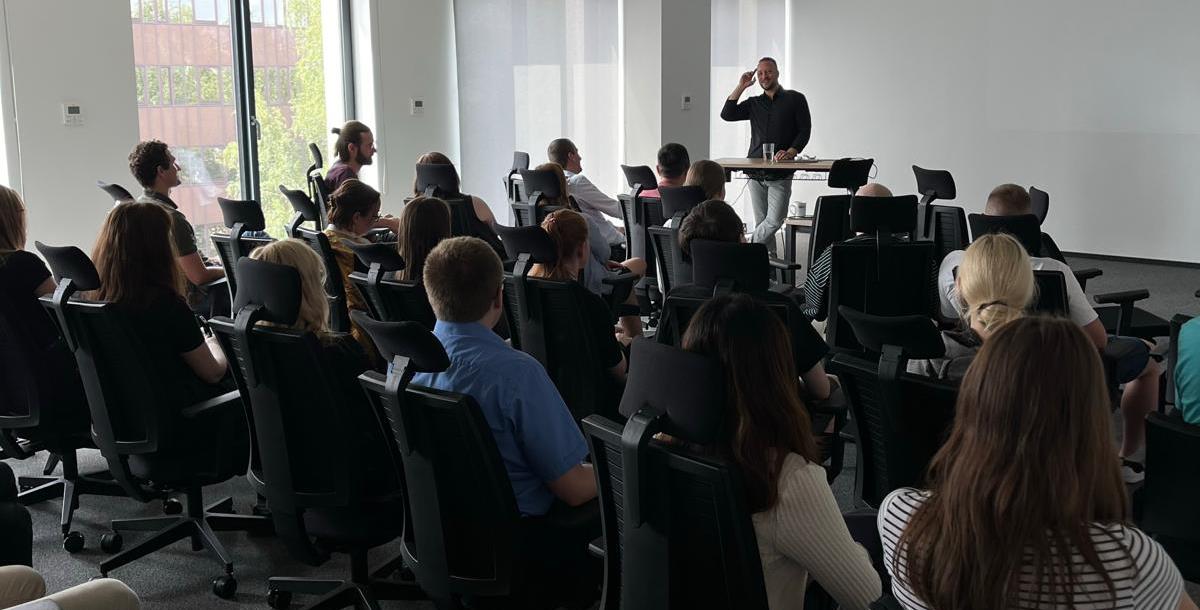
MDPI in Poland: Krakow Office
In July, I had the pleasure of visiting our Krakow office, following my recent trip to Warsaw to meet with the Polish Ministry of Science and Higher Education.

During these visits, I prioritized meeting with our Office Manager, Editorial Director, Group Leads, and members from various teams, including editorial, production, marketing, and journal relationship specialists, to understand their roles and current challenges. Instead of a formal presentation, I opted for an open discussion, sharing updates from headquarters to engage with colleagues in a more personal way.
Our Krakow office has many things to be proud of, including a large number of PhD colleagues (over a third of its staff holds a PhD degree). Krakow provides an opportunity for expanding beyond the 100 colleagues we currently have, by adding new hires in departments including editorial, production and marketing, among others.
About our Krakow office
- Opened in 2020
- 99 staff members as at 1 August 2024
- Main Departments include Editorial, Production, English Department, JRS, PR
Our Krakow office participates in international conferences, conducts author trainings and scholar visits, and engages in local market outreach. The office is also a member of the Polish Chamber of Commerce for High Technology (IZTECH) and is working on expanding its local engagement.
Krakow is the second-largest city in Poland, with a population of about 800,000. It also has a large student population of around 128,000, with seven universities. This means that roughly one in every eight residents is a student.
Poland and MDPI

Poland is a crucial market for MDPI. From 2020 to June 2024, Poland ranked 7th in submissions and 5th in publications for MDPI research articles. As at 31 July 2024, Poland ranks 7th in total MDPI publications, with approximately 70,000 research papers.
Between 2020 and June 2024, 61,500 authors from Poland published with MDPI. As at 30 June 2024, there are 1,205 active Editorial Board Members (EBMs) from Poland, with 661 EBMs (55% of the total) having an H-index over 25.
We also have four Editors-in-Chief (EiC) from Poland leading our journals: Coatings, Venereology, Advances in Respiratory Medicine, and Limnological Review, along with six Section EiC.
In 2023, we received approximately 21,000 submissions from Polish-affiliated authors, of which 12,032 were published.
“Poland is a crucial market for MDPI”
Meeting with Ministry of Education

On 22 July, we visited Warsaw to meet with the Polish Ministry of Science and Higher Education.
We were pleased to learn that they are strong supporters of the OA publishing model and value MDPI’s approach to the peer-review process, including our high ethical standards for quality control.
In 2023 Polish authors predominantly published their papers in OA, with MDPI holding the largest market share in OA publications within the country.
Our commitment to collaborating with Polish institutions is evident through our 33 Institutional Open Access Program (IOAP) agreements with prestigious institutions such as the University of Warsaw, the University of Wroclaw, the Jagiellonian University, and Gdańsk University of Technology. Through IOAP discounts, a healthy waiver rate, and our peer-review voucher system, we provide the Polish scholarly community with significant savings in OA publishing. The Minister greatly appreciated these efforts and our commitment to offsetting some of the APC costs.
We discussed industry concerns about the threat of papermills and presented the preventive measures MDPI has in place to mitigate this risk and uphold high ethical standards. We informed them of our commitment to combating papermills, including our involvement with United2Act and the STM Research Integrity Hub, as well as our efforts to expand our research integrity team and explore proactive measures.
Closing Thoughts

MDPI Thought Leadership Op-ed on Open Access is Now Live on Politico
I am pleased to share that our thought leadership Op-ed piece on Open Access (OA) is now live on Politico. This is a nice push for continued influence and support of OA among policymakers and industry leaders.
Why Politico?
Politico's reputation as a highly credible and influential news platform makes it an important venue to reach key opinion leaders (KOL) from academia, policymakers, and thought leaders from many industries. This visibility helps promote the OA philosophy.
Open Access: A Moral Imperative for Progress
In this piece, I discuss the necessity of making scientific research freely available to all. I argue that publicly funded research should be publicly accessible, highlighting how OA democratizes scientific knowledge, accelerates research availability, and fosters collaboration.
“Open Access is a fundamental right for all citizens”
Democratizing scientific communication
The impulse to democratize scientific communication is nothing new. OA may seem like a recent innovation, but its principles have historical roots traceable to Europe in the 15th century. Just as the printing revolution accelerated the dissemination of new ideas, OA publishing unlocks new scientific insights that would otherwise only be accessible to a few.
Benefits for scholars: amplifying impact through Open Access
Authors publishing in an OA journal can expect more citations of their work, increasing its potential impact. Research findings that are freely available are more likely to be cited than those hidden behind a paywall. Freedom of access greatly increases the potential audience for each paper, fostering a sense of community among researchers worldwide. Heightened visibility can attract prospective collaborators and employers for young scientists. At MDPI, we believe that all these factors can only accelerate the advance of science. Additionally, authors retain copyright in their work instead of signing it away, permitting broader dissemination under Creative Commons licenses and increasing its capacity for impact.
The moral imperative
OA is not just a matter of scientific policy; it is a fundamental right for all citizens and a prerequisite for a brighter, more informed future. Publicly funded research should be a top priority, and I am pleased to see policy moving in this direction. Our capacity to generate transformative scientific insights has to be democratized. The question today is no longer whether we can afford to embrace OA; rather, it is whether we can afford not to.
Chief Executive Officer
MDPI AG
2 August 2024
MDPI Romania Author Training Sessions in May
In May, MDPI Romania held three author training sessions – one endorsing an external event and two stand-alone sessions.
The National Session of Scientific Student Communications took place at Technical University Cluj on 17 and 18 May 2024. MDPI Romania sponsored this event and contributed an author training session on the production of research papers and case study analyses. JRS Norbert Kiss gave a presentation called The World of Open Access to explain different open access publishing models and the benefits of open access publishing. His presentation highlighted the impact of open access publishing on scientific progress and innovation.
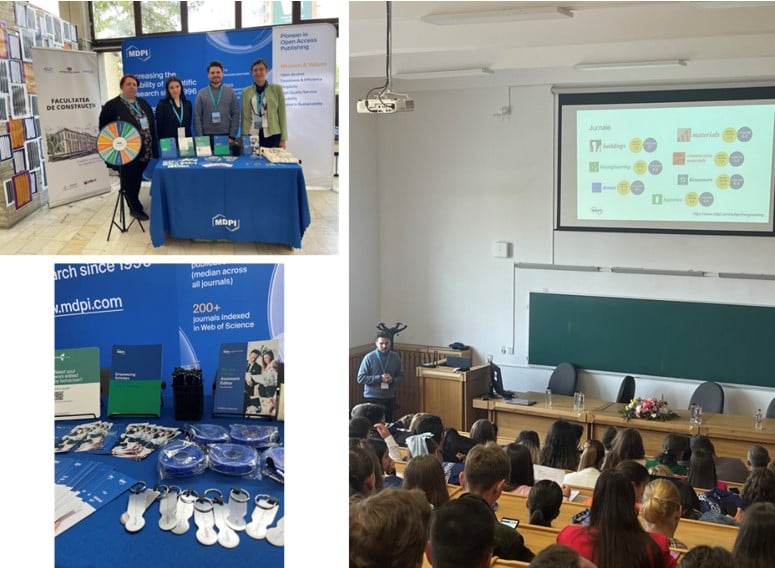
On 29 May 2024, MDPI Romania hosted an author training session for Ph.D. students, early career researchers, and professors at the Carol Davila University of Medicine and Pharmacy. In collaboration with Prof. Andreea Arsene, JRS Ioana Paunescu prepared two presentations: The Steps of the Publishing Process and Elaboration of a Peer Review Report. In her first presentation, she delved into MDPI’s history and mission, MDPI’s editorial process, and MDPI journals of various scopes that are accepting submissions. Her second presentation outlined the types of peer review, the contents of a peer review report by an MDPI reviewer, and the responsibilities of an MDPI reviewer.
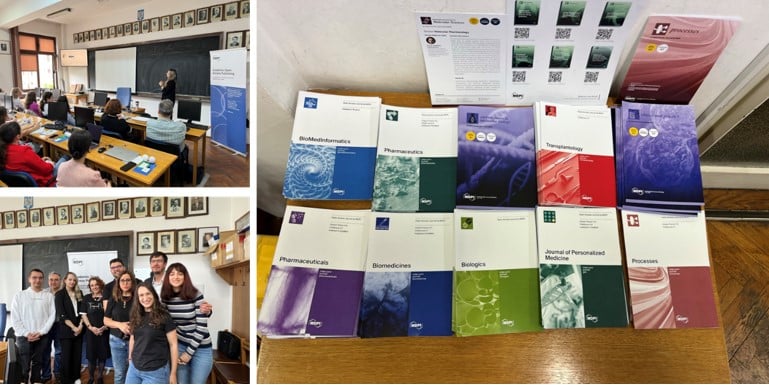
MDPI Romania also hosted an author training session at the Iasi University of Life Sciences on 29 May 2024. JRSs Laurentiu Preda and Cosmin Artan gave four presentations: Efficient Writing of an ISI-Indexed Scientific Article, Benefits of Publishing in the Open Access Model, Various Methods of Open Access Publishing, and MDPI Guide for the Article Review Process. The first three presentations offered guidance on how to improve academic writing, the fourth focused on how to write peer review reports. A highly interactive discussion followed the presentations, during which the JRSs provided extensive answers to attendees’ questions.
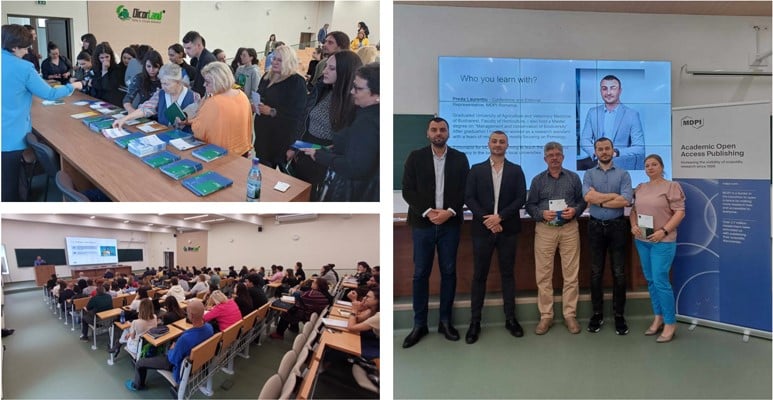
MDPI is grateful for all the attendees, speakers, and organizers involved in these events. Through their enthusiasm and dedication, these events were great successes.
10 July 2024
MDPI's Newly Launched Journals in June 2024
 Five new journals covering multiple subjects have launched their inaugural issue in June 2024. We are excited to be able to share with you the newest research rooted in the value of open access.
Five new journals covering multiple subjects have launched their inaugural issue in June 2024. We are excited to be able to share with you the newest research rooted in the value of open access.
We would like to express our deepest appreciation to all the Editorial Board Members and each journal will ensure its high-quality output using excellent editorial and rigorous peer review processes, to ensure that the articles achieve high impact and visibility.
Please feel free to browse and discover more about the new journals below.
|
Journal |
Founding Editor-in-Chief |
Journal Topics (Selected) |
 |
Prof. Dr. Marco Ranucci, IRCCS Policlinico San Donato, Italy |
anaesthetic medications; blood and fluid management; pain management; critical care; critical illness | view journal scope | submit an article |
 |
Dr. Giovanni E. Cacciamani, University of Southern California, USA |
surgical/procedural complications; complications; perioperative adverse events; postoperative adverse events | view journal scope | submit an article |
 |
Prof. Dr. Gassan Hodaifa, Universidad Pablo de Olavide, Spain |
laboratory management; laboratory safety; protective equipment; laboratory problems and challenges; laboratory Innovation | view journal scope | submit an article |
 |
Prof. Dr. Jan S. Suchodolski, Texas A&M University, USA |
companion animals health and disease; veterinary care and nutrition; genetics and genomics; behavior and welfare; human-animal relations | view journal scope | submit an article |
 |
Prof. Dr. Pierfrancesco De Paola, University of Naples Federico II, Italy |
real estate appraisal; economic and financial valuation of real estate projects; sustainable real estate; housing and urban economics | view journal scope | submit an article |
We wish to thank everyone who has supported the development of open access publishing. You are welcome to send an application here, or contact the New Journal Committee (newjournal-committee@mdpi.com) if you would like to create more new journals.
10 July 2024
Meet Us at the Chinese Society of Molecuar Horticulture Breeding Conference, 11–14 July 2024, Taiyuan, China

Conference: Chinese Society of Molecuar Horticulture Breeding Conference
Date: 11–14 July 2024
Location: Taiyuan, China
The conference of the Chinese Society of Molecuar Horticulture Breeding has been organized by well-known affiliations and invites domestic experts and scholars studying the molecular breeding of horticultural crops to report their academic research. The purpose of this conference is to present significant advancements in the molecular breeding of horticultural crops, promote the research of this area, and enhance communication and cooperation between researchers through high-quality academic reports and seminars.
MDPI will be attending the conference of the Chinese Society of Molecuar Horticulture Breeding. We welcome researchers from various backgrounds to visit and share their latest ideas with us.
The following MDPI journals will be represented:
- Horticulturae;
- Agronomy;
- Current Issues in Molecular Biology;
- International Journal of Molecular Sciences;
- Plants.
If you plan to attend this conference, please contact us online. Our delegates look forward to meeting you in person at our booth and answering any questions you may have. For more information about the conference, please visit the following website: https://www.cshs.org.cn/article/id/795.html.
20 June 2024
2023 Impact Factors for MDPI Journals Released

MDPI is pleased to announce the inclusion of 237 journals in the 2024 release of the Journal Citation Reports (JCR) and share the key results (see above).
This year, journals covered in the Emerging Sources Citation Index (ESCI) received category ranks together with journals in the Science Citation Index Expanded (SCIE) and Social Sciences Citation Index (SSCI). Overall, 139 MDPI journals indexed in ESCI are included in the new unified rankings for the first time.
Enhanced Comparability of Data
According to Clarivate, "the creation of unified category rankings [provides] a simpler and more complete category view for the evaluation of journal performance. [...] The category-first approach simplifies journal performance assessment with a holistic view of all journals in each subject category."
We are thrilled to announce that 72% of our ranked MDPI journals (171 of 237) are above average, in Q1 or Q2. Twenty-nine of our journals received their first Impact Factor this year, accounting for more than 5% of the journals accepted into the Web of Science last year.
MDPI Journals Ranked in JCR
The following data includes all MDPI journals indexed in SCIE, SSCI, ESCI and AHCI.
|
Journal |
Impact Factor |
Rank Quartile |
Category |
|
Q3 |
Acoustics |
||
|
Q2 |
Engineering, Mechanical |
||
|
Q2 |
Instruments & Instrumentation |
||
|
Q2 |
Management |
||
|
Q3 |
Respiratory System |
||
|
Q2 |
Engineering, Aerospace |
||
|
Q1 |
Agronomy |
||
|
Q2 |
Agricultural Engineering |
||
|
Q1 |
Agronomy |
||
|
Q1 |
Plant Sciences |
||
|
Q2 |
Computer Science, Artificial Intelligence |
||
|
Q2 |
Computer Science, Interdisciplinary Applications |
||
|
Q3 |
Computer Science, Artificial Intelligence |
||
|
Q2 |
Computer Science, Theory & Methods |
||
|
Q1 |
Agriculture, Dairy & Animal Science |
||
|
Q1 |
Veterinary Sciences |
||
|
Q1 |
Infectious Diseases |
||
|
Q1 |
Pharmacology & Pharmacy |
||
|
Q3 |
Immunology |
||
|
Q1 |
Biochemistry & Molecular Biology |
||
|
Q1 |
Chemistry, Medicinal |
||
|
Q1 |
Food Science & Technology |
||
|
Q2 |
Chemistry, Multidisciplinary |
||
|
Q1 |
Engineering, Multidisciplinary |
||
|
Q3 |
Materials Science, Multidisciplinary |
||
|
Q2 |
Physics, Applied |
||
|
Q2 |
Computer Science, Information Systems |
||
|
Q2 |
Engineering, Electrical & Electronic |
||
|
Q2 |
Telecommunications |
||
|
N/A |
Humanities, Multidisciplinary |
||
|
Q3 |
Environmental Sciences |
||
|
Q3 |
Meteorology & Atmospheric Sciences |
||
|
Q3 |
Physics, Atomic, Molecular & Chemical |
||
|
Q1 |
Audiology & Speech-language Pathology |
||
|
Q1 |
Mathematics, Applied |
||
|
Q2 |
Electrochemistry |
||
|
Q2 |
Energy & Fuels |
||
|
Q2 |
Materials Science, Multidisciplinary |
||
|
Q2 |
Psychology, Multidisciplinary |
||
|
Q2 |
Food Science & Technology |
||
|
Q2 |
Computer Science, Artificial Intelligence |
||
|
Q2 |
Computer Science, Information Systems |
||
|
Q1 |
Computer Science, Theory & Methods |
||
|
Q2 |
Engineering, Biomedical |
||
|
Q1 |
Biology |
||
|
Q2 |
Biochemistry & Molecular Biology |
||
|
Q2 |
Medicine, Research & Experimental |
||
|
Q1 |
Pharmacology & Pharmacy |
||
|
Q1 |
Engineering, Multidisciplinary |
||
|
Q3 |
Materials Science, Biomaterials |
||
|
Q1 |
Biochemistry & Molecular Biology |
||
|
Q1 |
Chemistry, Analytical |
||
|
Q1 |
Instruments & Instrumentation |
||
|
Q2 |
Nanoscience & Nanotechnology |
||
|
Q3 |
Biotechnology & Applied Microbiology |
||
|
Q1 |
Ornithology |
||
|
Q3 |
Neurosciences |
||
|
Q2 |
Construction & Building Technology |
||
|
Q2 |
Engineering, Civil |
||
|
Q2 |
Materials Science, Multidisciplinary |
||
|
Q1 |
Oncology |
||
|
Q4 |
Cardiac & Cardiovascular Systems |
||
|
Q2 |
Chemistry, Physical |
||
|
Q2 |
Cell Biology |
||
|
Q1 |
Materials Science, Ceramics |
||
|
Q3 |
Materials Science, Multidisciplinary |
||
|
Q2 |
Engineering, Chemical |
||
|
Q3 |
Chemistry, Multidisciplinary |
||
|
Q2 |
Chemistry, Analytical |
||
|
Q2 |
Electrochemistry |
||
|
Q1 |
Instruments & Instrumentation |
||
|
Q2 |
Pediatrics |
||
|
Q2 |
Engineering, Environmental |
||
|
Q2 |
Environmental Sciences |
||
|
Q3 |
Green & Sustainable Science & Technology |
||
|
Q2 |
Meteorology & Atmospheric Sciences |
||
|
Q2 |
Medicine, General & Internal |
||
|
Q3 |
Clinical Neurology |
||
|
Q3 |
Neurosciences |
||
|
Q2 |
Materials Science, Coatings & Films |
||
|
Q3 |
Materials Science, Multidisciplinary |
||
|
Q2 |
Physics, Applied |
||
|
Q3 |
Chemistry, Physical |
||
|
Q2 |
Mathematics, Interdisciplinary Applications |
||
|
Q2 |
Computer Science, Interdisciplinary Applications |
||
|
Q3 |
Physics, Condensed Matter |
||
|
Q2 |
Biochemistry & Molecular Biology |
||
|
Q2 |
Dermatology |
||
|
Q3 |
Computer Science, Information Systems |
||
|
Q2 |
Computer Science, Theory & Methods |
||
|
Q2 |
Crystallography |
||
|
Q3 |
Materials Science, Multidisciplinary |
||
|
Q3 |
Biochemistry & Molecular Biology |
||
|
Q2 |
Oncology |
||
|
Q3 |
Computer Science, Information Systems |
||
|
Q2 |
Multidisciplinary Sciences |
||
|
Q2 |
Dentistry, Oral Surgery & Medicine |
||
|
Q3 |
Dermatology |
||
|
Q3 |
Endocrinology & Metabolism |
||
|
Q1 |
Medicine, General & Internal |
||
|
Q2 |
Medicine, Research & Experimental |
||
|
Q2 |
Biodiversity Conservation |
||
|
Q3 |
Ecology |
||
|
Q1 |
Remote Sensing |
||
|
Q3 |
Environmental Sciences |
||
|
Q3 |
Geosciences, Multidisciplinary |
||
|
Q3 |
Ecology |
||
|
Q3 |
Economics |
||
|
Q2 |
Economics |
||
|
Q1 |
Education & Educational Research |
||
|
Q2 |
Computer Science, Information Systems |
||
|
Q2 |
Engineering, Electrical & Electronic |
||
|
Q2 |
Physics, Applied |
||
|
Q3 |
Energy & Fuels |
||
|
Q2 |
Physics, Multidisciplinary |
||
|
Q2 |
Environmental Sciences |
||
|
Q3 |
Genetics & Heredity |
||
|
Q4 |
Critical Care Medicine |
||
|
Q4 |
Dermatology |
||
|
European Journal of Investigation in Health Psychology and Education |
Q1 |
Psychology, Clinical |
|
|
Q2 |
Biotechnology & Applied Microbiology |
||
|
Q2 |
Materials Science, Multidisciplinary |
||
|
Q2 |
Ecology |
||
|
Q1 |
Forestry |
||
|
Q2 |
Fisheries |
||
|
Q2 |
Marine & Freshwater Biology |
||
|
Q3 |
Mechanics |
||
|
Q3 |
Physics, Fluids & Plasmas |
||
|
Q1 |
Food Science & Technology |
||
|
Q2 |
Multidisciplinary Sciences |
||
|
Q1 |
Forestry |
||
|
Q1 |
Mathematics, Interdisciplinary Applications |
||
|
Q3 |
Energy & Fuels |
||
|
Q3 |
Engineering, Chemical |
||
|
Q2 |
Computer Science, Information Systems |
||
|
Q2 |
Astronomy & Astrophysics |
||
|
Q4 |
Economics |
||
|
Q4 |
Mathematics, Interdisciplinary Applications |
||
|
Q4 |
Social Sciences, Mathematical Methods |
||
|
Q3 |
Gastroenterology & Hepatology |
||
|
Q4 |
Gastroenterology & Hepatology |
||
|
Q1 |
Polymer Science |
||
|
Q3 |
Ethnic Studies |
||
|
Q4 |
Family Studies |
||
|
Q3 |
Sociology |
||
|
Q2 |
Genetics & Heredity |
||
|
Q2 |
Geosciences, Multidisciplinary |
||
|
Q3 |
Geriatrics & Gerontology |
||
|
Q2 |
Health Care Sciences & Services |
||
|
Q2 |
Health Policy & Services |
||
|
Q4 |
Hematology |
||
|
Q4 |
Hematology |
||
|
N/A |
Humanities, Multidisciplinary |
||
|
Q2 |
Multidisciplinary Sciences |
||
|
Q1 |
Horticulture |
||
|
N/A |
Humanities, Multidisciplinary |
||
|
Q2 |
Water Resources |
||
|
Q4 |
Immunology |
||
|
Q2 |
Infectious Diseases |
||
|
Q2 |
Computer Science, Interdisciplinary Applications |
||
|
Q3 |
Computer Science, Information Systems |
||
|
Q2 |
Construction & Building Technology |
||
|
Q2 |
Engineering, Civil |
||
|
Q2 |
Transportation Science & Technology |
||
|
Q2 |
Chemistry, Inorganic & Nuclear |
||
|
Q1 |
Entomology |
||
|
Q2 |
Business, Finance |
||
|
Q1 |
Biochemistry & Molecular Biology |
||
|
Q2 |
Chemistry, Multidisciplinary |
||
|
Q1 |
Genetics & Heredity |
||
|
Q1 |
Pediatrics |
||
|
International Journal of Turbomachinery Propulsion and Power |
Q2 |
Engineering, Aerospace |
|
|
Q3 |
Engineering, Mechanical |
||
|
Q2 |
Engineering, Multidisciplinary |
||
|
Q2 |
Computer Science, Information Systems |
||
|
Q2 |
Geography, Physical |
||
|
Q2 |
Remote Sensing |
||
|
Q2 |
Cardiac & Cardiovascular Systems |
||
|
Q1 |
Medicine, General & Internal |
||
|
Q2 |
Materials Science, Composites |
||
|
Q3 |
Developmental Biology |
||
|
Q1 |
Engineering, Biomedical |
||
|
Q2 |
Materials Science, Biomaterials |
||
|
Q1 |
Sport Sciences |
||
|
Q2 |
Microbiology |
||
|
Q1 |
Mycology |
||
|
Q3 |
Imaging Science & Photographic Technology |
||
|
Q1 |
Psychology, Multidisciplinary |
||
|
Q3 |
Engineering, Electrical & Electronic |
||
|
Q2 |
Engineering, Manufacturing |
||
|
Q1 |
Engineering, Mechanical |
||
|
Q2 |
Materials Science, Multidisciplinary |
||
|
Q1 |
Engineering, Marine |
||
|
Q2 |
Engineering, Ocean |
||
|
Q2 |
Oceanography |
||
|
Q2 |
Health Care Sciences & Services |
||
|
Q1 |
Medicine, General & Internal |
||
|
Q2 |
Computer Science, Information Systems |
||
|
Q2 |
Telecommunications |
||
|
Journal of Theoretical and Applied Electronic Commerce Research |
Q1 |
Business |
|
|
Q1 |
Toxicology |
||
|
Q2 |
Biodiversity Conservation |
||
|
Q2 |
Communication |
||
|
Q2 |
Environmental Studies |
||
|
N/A |
Language & Linguistics |
||
|
Q2 |
Linguistics |
||
|
Q1 |
Law |
||
|
Q1 |
Biology |
||
|
Q2 |
Management |
||
|
Q2 |
Operations Research & Management Science |
||
|
Q2 |
Engineering, Mechanical |
||
|
Q2 |
Computer Science, Artificial Intelligence |
||
|
Q2 |
Computer Science, Interdisciplinary Applications |
||
|
Q2 |
Engineering, Electrical & Electronic |
||
|
Q3 |
Engineering, Electrical & Electronic |
||
|
Q2 |
Engineering, Mechanical |
||
|
Q2 |
Chemistry, Inorganic & Nuclear |
||
|
Q3 |
Chemistry, Physical |
||
|
Q3 |
Materials Science, Multidisciplinary |
||
|
Q1 |
Chemistry, Medicinal |
||
|
Q1 |
Pharmacology & Pharmacy |
||
|
Q3 |
Chemistry, Physical |
||
|
Q2 |
Materials Science, Multidisciplinary |
||
|
Q1 |
Metallurgy & Metallurgical Engineering |
||
|
Q2 |
Physics, Applied |
||
|
Q2 |
Physics, Condensed Matter |
||
|
Q2 |
Mathematics, Interdisciplinary Applications |
||
|
Q1 |
Mathematics |
||
|
Q1 |
Medicine, General & Internal |
||
|
Q2 |
Chemistry, Physical |
||
|
Q2 |
Engineering, Chemical |
||
|
Q2 |
Materials Science, Multidisciplinary |
||
|
Q2 |
Polymer Science |
||
|
Q2 |
Biochemistry & Molecular Biology |
||
|
Q3 |
Materials Science, Multidisciplinary |
||
|
Q2 |
Metallurgy & Metallurgical Engineering |
||
|
Q3 |
Biochemical Research Methods |
||
|
Q3 |
Microbiology |
||
|
Q2 |
Chemistry, Analytical |
||
|
Q2 |
Instruments & Instrumentation |
||
|
Q3 |
Nanoscience & Nanotechnology |
||
|
Q2 |
Physics, Applied |
||
|
Q2 |
Microbiology |
||
|
Q2 |
Geochemistry & Geophysics |
||
|
Q2 |
Mineralogy |
||
|
Q2 |
Mining & Mineral Processing |
||
|
Q3 |
Engineering, Multidisciplinary |
||
|
Q4 |
Chemistry, Organic |
||
|
Q2 |
Biochemistry & Molecular Biology |
||
|
Q2 |
Chemistry, Multidisciplinary |
||
|
Q3 |
Computer Science, Artificial Intelligence |
||
|
Q2 |
Computer Science, Cybernetics |
||
|
Q3 |
Computer Science, Information Systems |
||
|
Q2 |
Chemistry, Multidisciplinary |
||
|
Q2 |
Materials Science, Multidisciplinary |
||
|
Q2 |
Nanoscience & Nanotechnology |
||
|
Q2 |
Physics, Applied |
||
|
Q2 |
Clinical Neurology |
||
|
Q3 |
Clinical Neurology |
||
|
Q4 |
Neurosciences |
||
|
Q4 |
Environmental Sciences |
||
|
Q2 |
Biochemistry & Molecular Biology |
||
|
Q2 |
Genetics & Heredity |
||
|
Q1 |
Nursing |
||
|
Q1 |
Nutrition & Dietetics |
||
|
Q3 |
Marine & Freshwater Biology |
||
|
Q3 |
Oceanography |
||
|
Q4 |
Optics |
||
|
Q3 |
Chemistry, Organic |
||
|
Q3 |
Astronomy & Astrophysics |
||
|
Q2 |
Physics, Nuclear |
||
|
Q3 |
Physics, Particles & Fields |
||
|
Q2 |
Microbiology |
||
|
Q2 |
Pathology |
||
|
Q3 |
Pediatrics |
||
|
Q2 |
Chemistry, Medicinal |
||
|
Q1 |
Pharmacology & Pharmacy |
||
|
Q1 |
Pharmacology & Pharmacy |
||
|
Q3 |
Pharmacology & Pharmacy |
||
|
Q2 |
History & Philosophy of Science |
||
|
N/A |
Philosophy |
||
|
Q2 |
Optics |
||
|
Q2 |
Physics, Multidisciplinary |
||
|
Q1 |
Plant Sciences |
||
|
Q3 |
Physics, Fluids & Plasmas |
||
|
Q1 |
Polymer Science |
||
|
Q1 |
Polymer Science |
||
|
Q2 |
Engineering, Chemical |
||
|
Q4 |
Materials Science, Biomaterials |
||
|
Q2 |
Biochemistry & Molecular Biology |
||
|
Q4 |
Psychiatry |
||
|
Q1 |
Information Science & Library Science |
||
|
Q3 |
Instruments & Instrumentation |
||
|
Q3 |
Materials Science, Characterization & Testing |
||
|
Q4 |
Quantum Science & Technology |
||
|
Q2 |
Geosciences, Multidisciplinary |
||
|
Q3 |
Chemistry, Multidisciplinary |
||
|
Q2 |
Green & Sustainable Science & Technology |
||
|
N/A |
Religion |
||
|
Q2 |
Environmental Sciences |
||
|
Q1 |
Geosciences, Multidisciplinary |
||
|
Q2 |
Imaging Science & Photographic Technology |
||
|
Q2 |
Remote Sensing |
||
|
Q3 |
Medicine, General & Internal |
||
|
Q4 |
Obstetrics & Gynecology |
||
|
Q4 |
Reproductive Biology |
||
|
Q2 |
Environmental Sciences |
||
|
Q3 |
Green & Sustainable Science & Technology |
||
|
Q2 |
Business, Finance |
||
|
Q2 |
Robotics |
||
|
Q3 |
Public, Environmental & Occupational Health |
||
|
Q3 |
Pharmacology & Pharmacy |
||
|
Q2 |
Chemistry, Analytical |
||
|
Q2 |
Engineering, Electrical & Electronic |
||
|
Q2 |
Instruments & Instrumentation |
||
|
Q3 |
Chemistry, Analytical |
||
|
Q2 |
Medicine, General & Internal |
||
|
Q3 |
Psychology, Multidisciplinary |
||
|
Q2 |
Social Sciences, Interdisciplinary |
||
|
Q2 |
Womens Studies |
||
|
Q1 |
Engineering, Electrical & Electronic |
||
|
Q1 |
Urban Studies |
||
|
Q2 |
Social Sciences, Interdisciplinary |
||
|
Q2 |
Sociology |
||
|
Q2 |
Soil Science |
||
|
Q3 |
Chemistry, Physical |
||
|
Q3 |
Materials Science, Multidisciplinary |
||
|
Q2 |
Sport Sciences |
||
|
Q4 |
Mathematics, Interdisciplinary Applications |
||
|
Q3 |
Statistics & Probability |
||
|
Q3 |
Chemistry, Physical |
||
|
Q3 |
Materials Science, Multidisciplinary |
||
|
Q4 |
Surgery |
||
|
Q2 |
Environmental Sciences |
||
|
Q2 |
Environmental Studies |
||
|
Q3 |
Green & Sustainable Science & Technology |
||
|
Q2 |
Multidisciplinary Sciences |
||
|
Q1 |
Social Sciences, Interdisciplinary |
||
|
Q1 |
Engineering, Multidisciplinary |
||
|
Q3 |
Telecommunications |
||
|
Q4 |
Hematology |
||
|
Q2 |
Radiology, Nuclear Medicine & Medical Imaging |
||
|
Q2 |
Environmental Sciences |
||
|
Q1 |
Toxicology |
||
|
Q2 |
Food Science & Technology |
||
|
Q1 |
Toxicology |
||
|
Q2 |
Infectious Diseases |
||
|
Q2 |
Parasitology |
||
|
Q1 |
Tropical Medicine |
||
|
Q2 |
Astronomy & Astrophysics |
||
|
Q2 |
Physics, Particles & Fields |
||
|
Q3 |
Environmental Sciences |
||
|
Q3 |
Environmental Studies |
||
|
Q2 |
Geography |
||
|
Q3 |
Regional & Urban Planning |
||
|
Q2 |
Urban Studies |
||
|
Q1 |
Immunology |
||
|
Q1 |
Medicine, Research & Experimental |
||
|
Q2 |
Engineering, Mechanical |
||
|
Q2 |
Transportation Science & Technology |
||
|
Q2 |
Veterinary Sciences |
||
|
Q3 |
Engineering, Mechanical |
||
|
Q3 |
Mechanics |
||
|
Q2 |
Virology |
||
|
Q2 |
Environmental Sciences |
||
|
Q2 |
Water Resources |
||
|
Q2 |
Economics |
||
|
Q2 |
Political Science |
||
|
Q1 |
Social Sciences, Interdisciplinary |
||
|
Q2 |
Engineering, Electrical & Electronic |
||
|
Q2 |
Transportation Science & Technology |
Source: 2023 Journal Impact Factors, Journal Citation Reports TM (Clarivate, 2024)
About MDPI
A pioneer in scholarly, open access publishing, MDPI has supported academic communities since 1996. MDPI is leading the transition to open science by making more research free and accessible to everyone. Over 3.5 million researchers have entrusted MDPI with publishing their scientific discoveries. MDPI’s editorial process is bolstered by a network of dedicated reviewers, a team of 6000 professional, well-trained staff members, and an in-house article submission platform that was designed to ensure efficient processes within its 440 fully open access titles.
12 June 2024
Horticulturae Receives an Increased CiteScore of 3.5

We are pleased to inform you that Horticulturae (ISSN: 2311-7524) has received a heightened CiteScore of 3.5.
CiteScore provides transparent metrics that enable well-informed publishing strategy, library collection development, and the benchmarking of journal performance. It is now a standard citation metric alongside SNIP and SJR that gives an up-to-date view of a journal’s impact.
The 2023 CiteScore provides an assessment of the scientific influence of journals in the 2020 to 2023 period.
This is a reflection of the excellent performance, support, and dedication of all journal editors, reviewers, authors, and readers.
Horticulturae’s CiteScore ranks as follows:
- Q2 (30 out of 115) in the “Horticulture” category;
- Q2 (179 out of 516) in the “Plant Science” category.
For more journal statistics, please visit https://www.mdpi.com/journal/horticulturae/stats.
Thank you to everyone who has contributed to the journal.
Horticulturae Editorial Office



